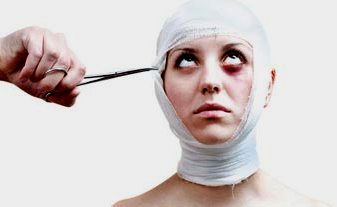
In today’s image-driven society, the pursuit of beauty has evolved from a personal choice to an almost compulsory standard. With advancements in cosmetic procedures, altering one’s appearance has never been easier, more accessible, or socially accepted. While many undergo treatments to enhance their features or boost confidence, for some, cosmetic work becomes an addiction—an endless chase for perfection that can have serious emotional, financial, and physical consequences.
The Rise of Cosmetic Procedure Culture
Cosmetic enhancements were once associated with celebrities and the wealthy, but social media, reality television, and medical advancements have made them mainstream. Injectable fillers, Botox, liposuction, and non-invasive procedures like laser treatments are now widely available and marketed as quick, routine fixes for imperfections. Clinics offer payment plans, influencers promote procedures as self-care, and the stigma around aesthetic enhancements has diminished.
While this increased accessibility has empowered many to feel more confident, it has also fueled an obsession with continuous enhancement. For some individuals, one procedure is never enough. Instead of seeing minor touch-ups as an occasional boost, they become dependent on the alterations, seeking constant perfection in an unattainable beauty ideal.
When Enhancements Become an Addiction
Cosmetic procedure addiction is often linked to body dysmorphic disorder (BDD)—a mental health condition where individuals obsess over perceived flaws, even when they are nonexistent or barely noticeable. Those affected may repeatedly seek out cosmetic treatments in an attempt to “fix” their appearance, yet they are never truly satisfied with the results. This cycle can lead to excessive procedures, botched results, and even emotional distress when expectations are not met.
Unlike traditional addictions that involve substance dependency, cosmetic addiction is rooted in a psychological need for validation. Social media plays a massive role in this, as people compare themselves to heavily filtered and surgically enhanced images. The pressure to maintain a youthful, flawless look creates anxiety and an unrelenting desire for the next tweak, whether it be another round of Botox, a more defined jawline, or another body contouring session.
The Costs of Chasing Perfection
While cosmetic procedures promise enhancement, excessive reliance on them can lead to a range of consequences:
- Physical Risks: Overuse of fillers and Botox can cause unnatural, distorted features, leading to the infamous “overdone” look. Multiple surgeries increase the risk of complications, scarring, and irreversible damage.
- Emotional Toll: Instead of boosting self-esteem, frequent procedures can deepen insecurity. The inability to feel satisfied with one’s appearance can result in depression, anxiety, and social withdrawal.
- Financial Strain: Cosmetic treatments are expensive, and ongoing procedures can lead to significant financial burdens, with some individuals going into debt to fund their beauty routines.
Breaking the Cycle
Recognizing cosmetic procedure addiction requires self-awareness and, in some cases, professional help. Therapists specializing in body image issues and self-esteem can help individuals understand their motivations and develop healthier coping mechanisms. Setting limits, taking breaks from social media, and redefining beauty on personal terms are also crucial steps in breaking free from the cycle of endless enhancement.
True confidence comes from self-acceptance, not external alterations. While cosmetic procedures can be a tool for empowerment, they should never become a substitute for self-worth. Learning to embrace natural beauty, imperfections included, is the most liberating transformation of all.